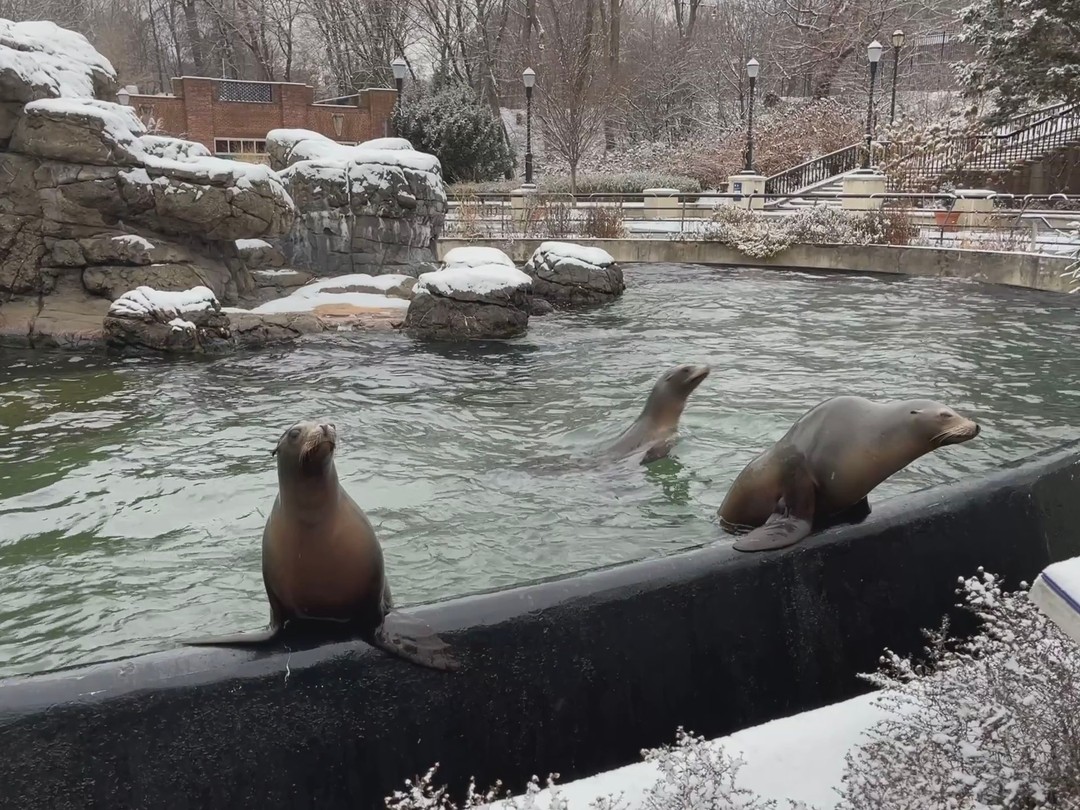- The ecology and physical traits of California sea lions, showcasing their adaptability to diverse environments, including snowy conditions.
- The role of zoos in providing enrichment and simulating natural habitats for California sea lions, with a focus on innovative strategies used during snow days.
- The importance of Instagram and social media platforms in enhancing public engagement and awareness about sea lion conservation efforts and zoo initiatives.
- The intersection of animal behavior and zoo management practices aimed at promoting welfare and education, using California sea lions as a case study.
- Beneficial impacts of wildlife conservation efforts on California sea lions, emphasizing the ecological significance and challenges faced by this species.
California sea lions are fascinating creatures, showcasing a range of adaptations that allow them to thrive in various environments. Known scientifically as Zalophus californianus, these pinnipeds possess a blend of agility, intelligence, and social dynamics that make them appealing subjects of study and popular attractions in zoos. With their streamlined bodies and flippers, California sea lions are built for life in coastal and marine habitats along the Western United States’ coastlines. However, their adaptability shines when they encounter less familiar conditions, such as snow.
Remarkably, these animals demonstrate significant behavioral flexibility. For instance, facsimiles of snow environments created in zoo settings provide new sensory stimuli for the sea lions. In snowy conditions, observers may note their playful interactions as they slide on snow-covered surfaces or engage in exploratory activities. Such environments challenge their physical aptitude and enrich their lives by introducing curious and stimulating elements that keep them active and engaged. The unique biological and ecological traits of California sea lions underline their resilience in the face of environmental changes.
Zoos play a pivotal role in creating enriching experiences that mimic a sea lion’s natural habitat. On snow days, these establishments often implement creative strategies to engage sea lions, providing opportunities for exercise and mental stimulation. Enrichment is a cornerstone of zoo management, as it encourages natural behaviors and alleviates the boredom that can accompany captivity. Zoos distribute a range of toys, puzzles, and environmental modifications that sea lions can investigate. Snow is a novel feature that brings about different forms of enrichment. It prompts various activities, such as foraging through snowdrifts for food, enabling the sea lions to utilize problem-solving skills intrinsic to their survival in the wild.
Social media platforms like Instagram play a crucial role in broadening public engagement with sea lion welfare and zoo activities. By showcasing moments of sea lions enjoying a snow day, zoos can reach a wider audience, providing insight into animal behavior and management efforts that the public might otherwise never see. Instagram posts featuring these captivating interactions capture the public’s imagination and draw attention to conservation messages. The visual appeal of sea lions frolicking in the snow serves to foster empathy and support for broader conservation efforts.
Animal behavior and zoo management practices intersect significantly in the context of California sea lions. Effective management focuses on understanding the intricate behaviors of these animals, which requires a scientific approach to behavioral assessment and environmental enrichment. Through careful observation and study, zoo caretakers can tailor specific enrichment activities that promote natural behaviors while ensuring the animals’ physical and psychological well-being. Ensuring sea lions maintain their social structures and hierarchical networks is crucial, as these dynamics influence their overall health and stress levels.
Wildlife conservation efforts have a profound positive impact on California sea lions, illustrating broader ecological implications and challenges this species faces. With pressures such as habitat loss, pollution, and climate change, conservation activities support the survival and overall health of sea lion populations. Marine protected areas (MPAs), rehabilitation programs, and policy advocacy are instrumental in safeguarding their habitats. By raising awareness through exhibits and social media, zoos contribute to the public’s understanding of environmental stewardship and the significance of protecting marine mammals like the California sea lion. This efforts emphasizes the necessity for robust, multifaceted conservation strategies to address both existing and emerging threats to sea lions’ habitats.
*****
Source Description
Enjoy this snow day with our California sea lions!


